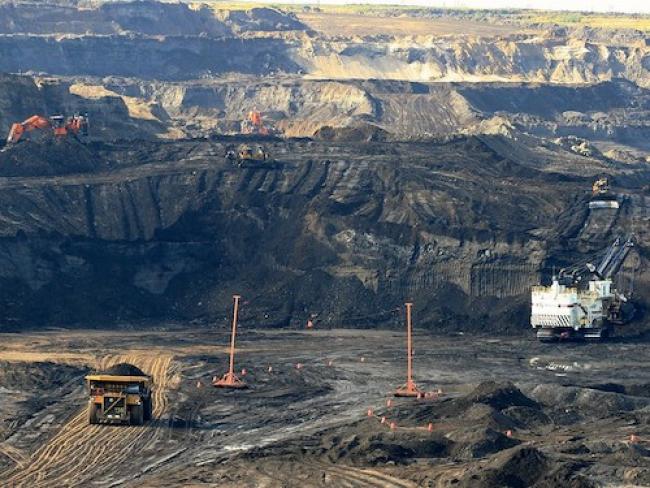Articles Menu

July 11, 2021
Two of Canada’s biggest fossil companies say they’ll by looking for about C$50 billion in taxpayer subsidies to bring their net greenhouse gas emissions to zero by 2050.
Suncor Energy and Cenovus Energy are two of five companies that formed an Oil Sands Pathway to Net Zero alliance last month, touting a shaky plan to cut their emissions while increasing their oil production. Cenovus unveiled an “aspirational” net-zero by 2050 target in January 2020, and Suncor followed suit a net-zero target in late May.
Now, they’re saying they want to make it happen with other people’s money.
“We haven’t been able to find any jurisdiction in the world where carbon capture has been implemented, where the national government or the state governments are not very significant partners in that investment,” Cenovus CEO Alex Pourbaix told Bloomberg. “I don’t think any of us would ever be in a position to go at this on our own. It’s just too significant an undertaking.”
The overall plan will cost C$75 billion, the news agency reports, citing an interview with Pourbaix and Suncor CEO Mark Little. “About half of the emission cuts would need to come from capturing carbon at oil sands sites and sequestering it deep underground, which may require as much as two-thirds government capital like in Norway,” Bloomberg writes, citing Little. “It’s still unclear how and when most of the projects will be implemented, or which agreements will be needed, but it’s clear the industry doesn’t want to do it alone.”
A spokesperson for Natural Resources Minister Seamus O’Regan, Jr. declined to comment on whether the government would seriously consider the fossil CEOs’ request.
Citing Pourbaix, Bloomberg says the fossils’ emissions reduction plan “will include measures like switching the fuels used at oil sands operations. Cenovus and the other companies are also developing ways to use solvents like propane to help separate the oil from the sand more efficiently and pump more crude with lower steam requirements. Later on, the industry might employ small nuclear reactors to make steam.”
But the plan certainly doesn’t call for a reduction or phaseout in tar sands/oil sands production. And it “doesn’t include so-called Scope 3 emissions, the ones generated by cars, aircraft, homes and factories when the fossil fuels produced in the oil sands are burned by the end consumers,” Bloomberg writes.
Which means all of that subsidized investment would apply to the emissions Canadian fossil companies generate in the process of extracting their raw product. More than 80% of the emissions in a barrel of oil enter the atmosphere when an end user receives the final product and uses it as directed.
[Top photo: Julia Kilpatrick, Pembina Institute/flickr]